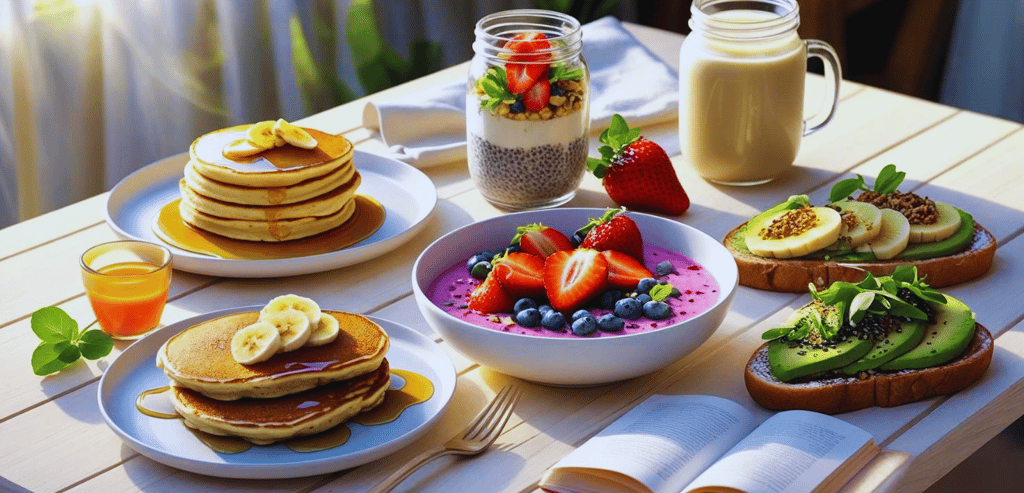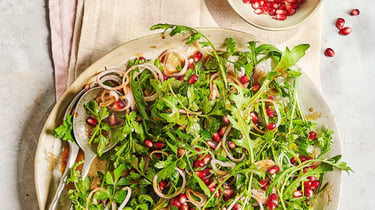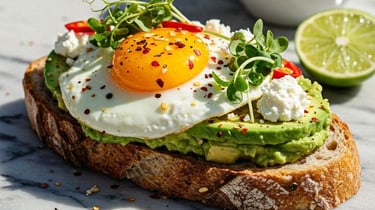Meal Planning for Inflammation Support
Want to reduce pain naturally? These 7 vegan meals in the inflammation support diet support your wellness goals. Visit to explore more!
ANTI-INFLAMMATORY TIPS


The Ultimate Anti-Inflammatory Diet Guide: Beat Inflammation, Feel Awesome & Say Goodbye to Pain
What’s Up With Inflammation Anyway?
So, what is inflammation?
Think of inflammation like your body’s personal alarm system. When you get a cut, catch a bug, or bump into something sharp (ouch), your immune system jumps into action. You get that classic swelling, redness, and warmth—that’s your body fixing stuff. This kind of inflammation is short-lived and super helpful.
But here’s the catch: sometimes your body forgets to turn off that alarm. That’s called chronic inflammation—it’s sneaky and slow, and it can quietly mess with your organs and tissues without you even realizing it.
Why is chronic inflammation a big deal?
Because it’s linked to a whole bunch of health problems that sneak up on you:
Diabetes (yeah, inflammation messes with insulin)
Heart disease (plaque buildup speeds up)
Arthritis (ouch, joints hurt and swell)
IBS and other gut issues
Fatty liver disease
Certain cancers
Chronic pain like migraines or fibromyalgia
Pesky skin stuff like eczema or acne
Low energy and those nights when you just can’t sleep
Basically, chronic inflammation is like that uninvited guest who overstays their welcome and wrecks the party.
The good news? Food’s got your back!
You can actually use food as medicine to chill out that inflammation. An inflammation support diet (or fancy talk: an anti-inflammatory food plan) is all about loading up on whole, nutrient-packed foods that help calm your immune system. What you eat can either fan the flames or put them out.


What’s the Anti-Inflammatory Diet All About?
Keep it real with whole, unprocessed foods
The magic here is simple: eat foods that come straight from the earth and skip the junk. Fresh fruits, veggies, lean proteins, whole grains, nuts, seeds, and good-for-you fats are the MVPs. Think Mediterranean diet vibes—that’s basically the gold standard for beating inflammation.
What nutrients should you look for?
Antioxidants: These guys fight off the “bad stuff” that causes inflammation. You’ll find them in colorful fruits and veggies.
Omega-3 fatty acids: Found in fatty fish and some plants, these fats help cool down inflammation.
Fiber: Keeps your gut happy and your digestion smooth.
Prebiotics & probiotics: Fancy words for the good bacteria that keep your gut microbiome balanced and inflammation in check.
And it’s not just about food
Don’t forget the other stuff that matters: quit smoking, get good sleep, manage stress (maybe try some yoga or walks), and keep moving regularly.
Superfoods That Fight Inflammation Eat These!
Fruits
All fruits are winners, but berries are like the Avengers of the fruit world—they’re packed with anthocyanins (fancy antioxidant pigments that make them blue, purple, or red). Blueberries, strawberries, raspberries, cherries—they’re all great. Citrus fruits (hello, oranges and lemons) bring tons of vitamin C, and pineapple’s got bromelain, an enzyme that’s basically an inflammation ninja.
Veggies
Rule #1: Eat all the veggies.
Dark leafy greens like spinach and kale are packed with vitamins and antioxidants. Cruciferous veggies (broccoli, cauliflower, Brussels sprouts) bring sulforaphane to the party, which fights inflammation and helps detox your body.
Sweet potatoes, beets, bell peppers, and even yellow squash are loaded with all kinds of good stuff that your body loves.
Healthy fats & oils
Forget the fear of fats—healthy fats are your friends here. Extra virgin olive oil is basically liquid gold and acts like a natural ibuprofen. Avocados, nuts (almonds, walnuts), and seeds (chia, flax) bring omega-3s and antioxidants, so don’t hold back.
Protein power
Choose proteins that fight inflammation instead of causing it:
Fatty fish like salmon and mackerel are omega-3 superheroes.
Legumes (beans, lentils, chickpeas) are fiber and protein powerhouses.
Pasture-raised chicken or turkey with good sourcing? Yes, please.
Eggs pack protein and vitamin D, which can help tone down inflammation.
Whole grains
Quinoa, oatmeal, brown rice, and buckwheat digest slowly, so they don’t spike your blood sugar and set off inflammation alarms. Bonus: they’re loaded with fiber and antioxidants.
Fermented foods
Yogurt, kefir, and sauerkraut are like probiotics’ VIP lounge for your gut—helping your digestion and reducing inflammation.
Herbs & spices
Turmeric (curcumin is the star), ginger, oregano, thyme, cardamom, garlic, basil, and cinnamon aren’t just tasty—they pack some serious anti-inflammatory punches. Bonus tip: turmeric + black pepper = super absorption.
Teas
Sip on green tea for those polyphenols that tell inflammation to take a hike.
Watch Out: Foods That Can Stoke the Fire
Sugary stuff and refined carbs
White bread, sweets, sodas, and pastries are like fuel to the inflammation fire—causing blood sugar spikes that make your body crank out inflammatory chemicals.
Bad fats
Trans fats (think margarine, fried snacks, and many processed foods) and too much saturated fat aren’t your friends here—they mess with your body’s inflammation controls. And too much omega-6 (corn, soybean oils) can throw off your fat balance and fan inflammation.
Processed meats
Bacon and sausages might taste good, but they’re packed with preservatives and salt that can cause inflammation flare-ups.
Booze
A little wine is fine, but overdoing alcohol can inflame your liver and raise inflammation markers.
Other triggers
Gluten only matters if you’re sensitive or have celiac.
Nightshades like tomatoes and eggplant usually aren’t villains (sorry, haters!).
Preservatives in processed foods might bother some folks.
Let’s Get Practical: Your Anti-Inflammatory Meal Plan Game Plan
Sample meals you’ll actually want to eat
Breakfast:
Oat porridge with berries, raspberry-kefir smoothies, avocado toast with egg salad, or a chia pudding with almonds and blueberries.
Lunch: Veggie grain bowls with turmeric dressing, white bean salads, sweet potato and kale with chicken, or salmon-stuffed avocados.
Dinner: Roasted salmon with veggies, chicken quinoa bowls, spinach salad with sweet potatoes and beans, vegan coconut chickpea curry, or shrimp pesto quinoa bowls.
Snacks: Nuts, fresh fruit, Greek yogurt with berries, hummus with veggie sticks, or even spiced roasted walnuts.
Meal prep tips
Chop your veggies ahead of time, batch-cook grains and proteins, and store everything in reusable containers. That way, healthy eating doesn’t feel like a chore during busy weeks.
Keep it sustainable
Start by adding more anti-inflammatory foods instead of cutting everything out all at once. Listen to your body, experiment with flavors, and cook at home whenever you can. It’s all about making this a lifestyle, not a crash diet.
Write a short text about your service
Write a short text about your service
Write a short text about your service






FAQs, Because You’re Curious
Q: Is coffee good or bad for inflammation?
A: In moderation, it’s pretty good—loaded with antioxidants! Just don’t overdo it.
Q: Can I eat meat?
A: Yep! Just stick to lean stuff like chicken, turkey, and wild fish. Red meat? Keep it rare and responsibly sourced.
Q: When will I see results?
A: Some folks feel better in days, but serious inflammation might take weeks.
Q: Is this diet for everyone?
A: Mostly yes, but check with your doc if you have special health concerns.
Q: Do I need supplements?
A: They can help fill gaps, like fish oil or turmeric pills, but whole foods come first. Chat with a pro before starting anything.
Q: Do I have to go gluten-free?
A: Only if you really need to.
Q: Are nightshades inflammatory?
A: Nah, most people tolerate them fine.
Q: Why no super low-calorie plans?
A: Because eating too little isn’t sustainable or healthy long-term. Balance is key.
Wrapping It Up: Your Path to Feeling Great
Switching to an inflammation support diet can seriously help with joint pain, digestion, energy, mood, and even skin and weight. The best part? It’s all about enjoying tasty, wholesome foods, not feeling deprived.
So, why not give it a shot? Chat with your healthcare provider if you want personalized tips, then dive into those recipes and start feeling like your best self. Your body will thank you!
Anti-inflammatory Recipes Taste Good
Rather than quick fixes, these detox recipes emphasize gentle resets: hydrating meals, high-fiber vegetables, and lighter combinations that give your body a break from processed overload.


Why Try the Paleo Diet
Discover the benefits of paleo eating, how it compares to other diets, and the best ways to start with simple Paleo recipes and tips
